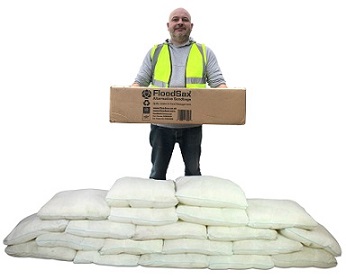 The FloodSax sandless sandbags in this one easy-to-carry box are equivalent to 20 sandbags
The FloodSax sandless sandbags in this one easy-to-carry box are equivalent to 20 sandbags
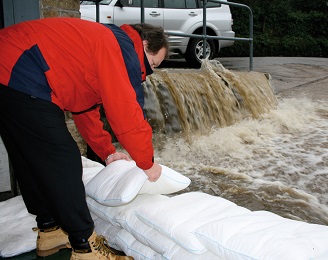 FloodSax alternative sandbags are robust enough to keep a torrent of floodwater at bay
FloodSax alternative sandbags are robust enough to keep a torrent of floodwater at bay
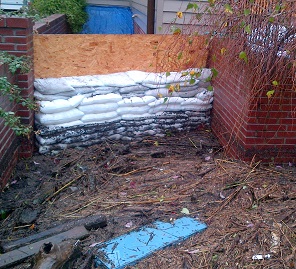 FloodSax sandless sandbags held back a storm surge and tons of debris after a hurricane in the USA
FloodSax sandless sandbags held back a storm surge and tons of debris after a hurricane in the USA
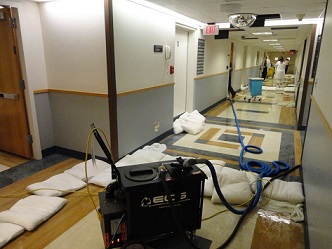 FloodSax alternative sandbags soaked up this serious leak inside a hospital, preventing countless thousands of pounds damage
FloodSax alternative sandbags soaked up this serious leak inside a hospital, preventing countless thousands of pounds damage
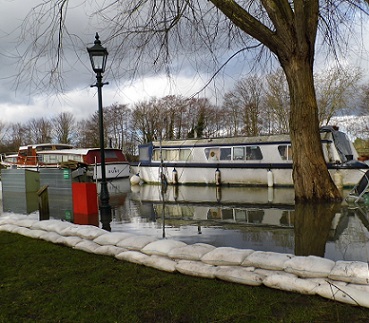 A wall of FloodSax sandless sandbags stopping water from overflowing this river bank
A wall of FloodSax sandless sandbags stopping water from overflowing this river bank
Are sandbags effective flood barriers?
Sandbags have been used for flooding and as flood defences for as long as anyone can remember, but the most frequently asked question remains is do sand bags really work to keep filthy floodwater out of your business or home?
And how do you get rid of sandbags once they’ve been used or can you reuse sand bags?
On the face of it sandbags seem a relatively cheap way to keep floodwaters out but dealing with them is a laborious, back-breaking task that requires a lot of time and effort. They also cost a fortune to store or transport anywhere and they are virtually impossible to deploy quickly.
Frequently asked questions about sandbags
Where would your store sandbags? They will take up a lot of space and would need heavy duty racking to hold them so ideally they need warehouses.
Are sandbags biodegradable? The answer is a resounding no. They take up one of the earth’s valuable resources – sand – but there is no easy way to get rid of sandbags once they’ve been used.
Can sandbags be reused? Again, it’s a clear no as just about all floodwater is contaminated so once they’ve been used you need to get rid of them to avoid potential health problems from all the bugs and nasties that are stuck in them from the floodwater.
And the biggest question of all. Do sandbags work to prevent flooding?
In the UK the Environment Agency - experts on floods and pollution - say sandbags have many pitfalls and people should look to other products specifically designed to be fit for purpose when flooding strikes. One of these are FloodSax alternative sandbags.
The Environment Agency states: “Sandbags are relatively ineffective when compared to purpose-built flood protection products. We strongly encourage people to use these products.”
The Environment Agency report adds that sandbags:
- Do seep water even when well-stacked and trodden into place.
- It takes two people to fill them and around one hour to get just 12 sandbags ready.
- They can be difficult to handle and laying them can be very time-consuming.
- The outer material used to make sand bags will usually perish if left in place for a long time.
On top of this it’s hard to even get hold of sandbags as local authorities have no responsibility to provide them to homes and businesses when flooding is imminent.
The Environment Agency warns: “Don’t assume the authorities will provide you with sandbags in a flood emergency. It is the responsibility of property owners to take appropriate action to protect their property from flooding.”
In the USA, one local authority, Lewis County in Washington, admits sandbags won’t keep water out by themselves, saying: “Sandbags alone should not be relied on to keep water outside a building. Use baffle boards (plywood sheeting) or sheets of plastic tarp with sandbags.”
Lewis County also warns:
- Sandbags will not seal out water.
- Sandbags deteriorate when exposed for several months to continued wetting and drying. If bags are placed too early, they may not be effective when needed.
- Sandbags are not always an effective measure in the event of flooding because water will eventually seep through the bags and finer materials like clay may leak out through the seams.
In Australia, the Queensland Government’s Disaster Management advice states: “Sandbags will not stop the water completely. Do not over fill as they will be too heavy to carry.”
And they add: “Sandbags should not be reused if they have been in contact with floodwater.”
Traditional sandbags are made from coarse canvas known as Burlap woven from jute, hemp, or a similar fibre which means they can be prone to rotting.
What is the best alternative to sandbags?
People worldwide have been turning to FloodSax sandless sandbags instead and well over 2.5 million have now been sold after proving themselves in action time and time again.
Unlike traditional sand bags, they are space-saving to store and quick and easy to deploy. They resemble large pillowcases but are vacuumed-packed in packs of 5 and 4 packs fit into boxes that one person can easily carry. That’s the equivalent of 20 sandbags that would need a large car or a van to shift.
If a flood is forecast or it’s actually happening, simply immerse the FloodSax in water and they expand in around three minutes to weigh 20kg (44lbs). A special gelling polymer inside simply absorbs the water and then keeps it in the FloodSax so it can be used for however long the emergency lasts which could be several months.
Unlike sandbags, FloodSax are largely biodegradable so can be disposed of in landfill.
What’s wrong with sandbags?
Sand bags be replaced regularly costing thousands of pounds for big companies and local authorities that need palletised sandbags ready all year round for any emergency.
Sandbags can deteriorate if stored for a long time, especially in cold, damp warehouses.
Sandbags are exceptionally unwieldy to lift and handle with all kinds of health, safety and manual handling technique problems for staff who have to use them at businesses.
Sandbags are messy with the sand easily washed out and adding to all the damage if they burst.
Sandbags are difficult and expensive to transport anywhere due to their weight. One box of 20 FloodSax is equal to 20 sandbags on a pallet.
Sandbags need a lot of people to move any number of sandbags anywhere.
Why are FloodSax better than traditional sandbags?
FloodSax are easy to store and can be vacuumed-packed to save even more room.
FloodSax are always there for peace of mind. No panic to buy sand bags if a flood is forecast.
FloodSax can be instantly deployed 24/7 if a flooding is imminent when every second counts. Imagine trying to manoeuvre heavy, unwieldy sandbags into place.
FloodSax can be expanded in water right next to where you need them and stay taut until the flood subsides.
FloodSax are lightweight before they are used with the standard bag weighing just a few ounces so can be used by people who would not be able to lift sandbags.
Thousands of FloodSax can be quickly transported in a van, saving on fuel, wages and manpower.
FloodSax can be stored in small depots around the area, not one huge central store so can be taken even more quickly to the scene.
One FloodSax can be expanded and put down the toilet to block it from filthy water being forced up by the floodwater backing up through the drains and sewer.
FloodSax alternative sandbags can be used inside homes and businesses to soak up spills and leaks, often in hard-to-reach places. Simply take them out of their vacuum packaging and pop them on the spilled water or any other liquid and they will absorb it.
FloodSax don't need sand - one of the earth’s natural resources - and so saves the environment.
How can I get hold of FloodSax?
FloodSax are available from the 600 Travis Perkins stores nationwide or online at www.floodsaxdirect.com
Safety specialists such as Aspli, Cromwell, L A Safety Suppiles, The Safety Company and New Pig also supply them. For more information go to http://www.floodsax.co.uk/buy/uk-suppliers/